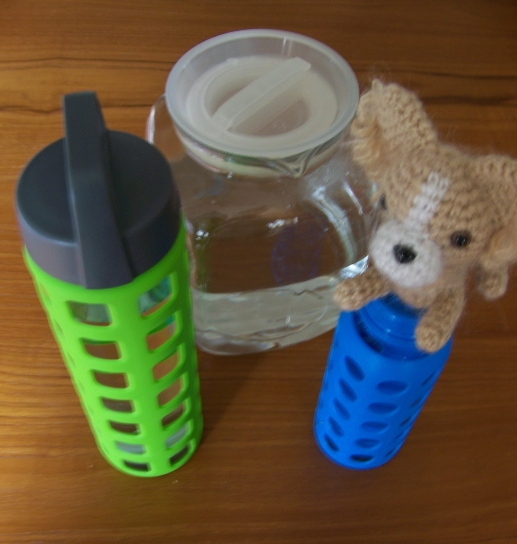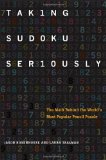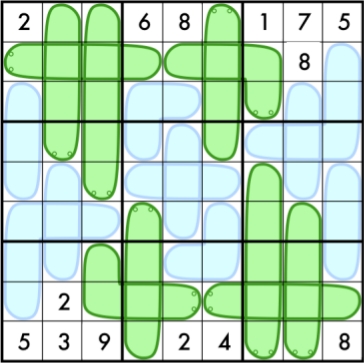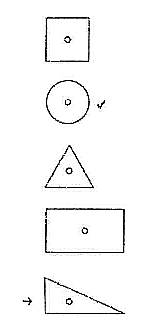21st August 2012, 12:47 pm
I’m trying to lose weight. Many books explain that dieting doesn’t work, that people need to make permanent changes in their lives. This is what I have been doing for several years: changing my habits towards a healthier lifestyle.
This isn’t easy. I am a bad cook; I hate shopping; and I never have time. Those are strong limitations on developing new habits. But I’ve been a good girl and have made some real changes. Unfortunately, my aging metabolism is changing faster than I can adopt new habits. Despite my new and improved lifestyle, I am still gaining weight.
But I believe in my system. I believe that one day I will be over the tipping point and will start losing weight, and it will be permanent. Meanwhile I would like to share with you the great ideas that will work someday.
- Declare some food non-food:
- I used to keep a kosher kitchen. It was so easy to shop. I didn’t need to go to every aisle in the store because the kosher dietary laws excluded so many foods. Now I’m not kosher anymore, but I like the idea of restricting bad foods, so I created Tanya’s own kashrut rules:
- Soda is not drinkable.
- Only dark chocolate deserves to be eaten.
- Corn syrup, artificial colors and sweeteners are poison.
- Make healthy foods easily accessible:
- I have Boston Organics fruits and vegetables delivered to me every other week. Initially they all rotted and I had to throw them out, but I am stubborn. Now I’ve learned how to make a turnip salad and how to enjoy an apple. I will soon switch to a weekly delivery.
- When I’m in a restaurant, I have a rule that I must order vegetables. I do not have to eat them, I just have to order them. But since I do not like things wasted, I end up eating at least some of them. Now I’ve grown to like eggplants and bell peppers.
- Make unhealthy foods less accessible:
- I buy precut frozen cakes. When I am craving sugar, I defrost one piece. A while ago I would have finished the whole cake the day I bought it, but now, after one piece, I am usually too lazy to defrost another.
- I buy fewer sweets now. Actually I buy exactly one desert item, as opposed to the half a shopping cart I used to buy. I used to rationalize that I need deserts to serve potential guests. Then I would eat all the sweets myself. Now I’ve decided that my friends will forgive me if I don’t serve desert.
- Engage my friends:
- Three of my girlfriends and I signed up for the gym together. Without them, I would have dropped the gym a long time ago. Natasha’s call inviting me to yoga often is the extra push that I need. Now, several years later, the habit is formed and when necessary I go alone.
- Introduce other good habits:
- I have a separate computer for games. I put it on top of my bookcase, so I have to stand while playing. This way I can’t play for too long, and burn extra calories at the same time.
 I have many other ideas that for different reasons haven’t yet become habits. So I am thinking about tricks to turn them into habits.
I have many other ideas that for different reasons haven’t yet become habits. So I am thinking about tricks to turn them into habits.
- Start every meal with water.
I keep forgetting to start my meals with water. Besides, I do not like plastic bottles. So now I’ve bought glass bottles with protective sleeves to carry in my car and my bag conveniently. They look so cool that I enjoy sipping from them.
- Exercise every day.
I never exercise in the mornings, because I want this time for mathematics. But in the evenings I am often too tired and skip my scheduled gym sessions and dance classes. I often spend the whole day inside in my pajamas. So to help me to exercise daily, my friend crocheted a small toy dog for me. Now I pretend that it’s a real dog that needs to be walked every day.
I have many more ideas, but I gotta run now. I need to walk my dog.
Share:





20th August 2012, 03:01 pm
 I received the book Taking Sudoku Seriously by by Jason Rosenhouse and Laura Taalman for review and put it aside to collect some dust. You see, I have solved too many Sudokus in my life. The idea of solving another one made me barf. Besides, I thought I knew all there is to know about the mathematics of Sudoku.
I received the book Taking Sudoku Seriously by by Jason Rosenhouse and Laura Taalman for review and put it aside to collect some dust. You see, I have solved too many Sudokus in my life. The idea of solving another one made me barf. Besides, I thought I knew all there is to know about the mathematics of Sudoku.
One day out of politeness or guilt I opened the book — and couldn’t stop reading.
The book is written for people who like Sudoku, but hate math. This is so strange. Sudoku is math. People who are good at Sudoku are good at math, or at least they are supposed to be. It seems that math education in the United States is so bad that people who were born to be good at math and to like math, hate it instead. So the goal of the book is to establish a bridge from Sudoku to math. And the book does a superb job of it.
This well-written book moves from puzzles to discussions in such a natural way that math becomes a continuation of puzzles.
Taking Sudoku Seriously covers a lot of fun material: methods to solve Sudoku, how to count the number of different Sudoku puzzles, and how to find the smallest number of clues that are needed for a unique puzzle. The book travels into the neighboring area of Latin and Greco-Latin squares. While discussing all those fun things it covers groups, symmetries, number theory, graph theory (including book thickness) and more.
I am not the target audience for this book, because I do not need convincing that math is fun. The best part for me was the hundred puzzles. Only a portion of them were standard Sudoku puzzles — and I skipped those. The others were either Sudoku with a twist or plain math puzzles.
The puzzles are all very different and I was so excited by them, that I went ahead and solved them, and caught up with reading the text later. And I enjoyed both: reading and solving.
Here is puzzle 91 from the book. Fill in the grid so that every row, column, and block contains 1-9 exactly once. In addition, each worm must contain entries that increase from tail to head. For blue worms you must figure out yourself which end is the head.

Share:





9th August 2012, 05:07 pm
It’s easy to judge who is the fastest runner or swimmer. Judges do not need to be runners and swimmers themselves. They simply need a stopwatch and a camera.
Other competitions are more difficult to judge. Take for example the Fields medal. The judges need to be mathematicians. Since they can’t be experts in all the different areas of mathematics, they have to rely on recommendation letters. The mathematicians who write recommendation letters are biased, because they are interested in promoting their own field. The committee’s job is not simple, not the least because it involves a lot of politics. It is easy to award the medal to Grigory Perelman. He solved a high-profile long-standing conjecture. But other cases are not that straightforward.
Imagine a genius mathematician with a new vision. He or she might be so far ahead of everyone else, that the Fields committee would fail to appreciate the new concept. I wish the math community would create a list of mathematicians who deserved the Fields medal, but were passed over. As time goes by, perhaps a new Einstein will emerge on this list.
The reason the Fields committee more or less works is that the judges do not need to be as talented mathematicians as the awardees. They do not need to create mathematics, they need to understand it. And the latter is easier than the former.
A completely different story happens with IQ tests. Someone has to write those tests. There is no reason to think that writers of the IQ tests are anywhere close to the end tail of the IQ distribution. Hence, the IQ tests are not qualified to find the IQ geniuses.

Now might be a good time to complain about the IQ test I took myself. Many years ago I tried an IQ test online through tickle.com. I was so disappointed with my non-perfect score that I never looked at my answers. Recently, while cleaning my apartment, I discovered the printout of the test. I made one mistake in the following question.
Which one of the designs is least like the other four?
The checkmark is the expected answer. They think that the circle is the odd one out because all the other shapes are polygons. The arrow points to my answer. I chose the right triangle because it is the only shape without symmetries. Who says that polygonality is more important than symmetry?
Share:





 I have many other ideas that for different reasons haven’t yet become habits. So I am thinking about tricks to turn them into habits.
I have many other ideas that for different reasons haven’t yet become habits. So I am thinking about tricks to turn them into habits. I received the book
I received the book 
